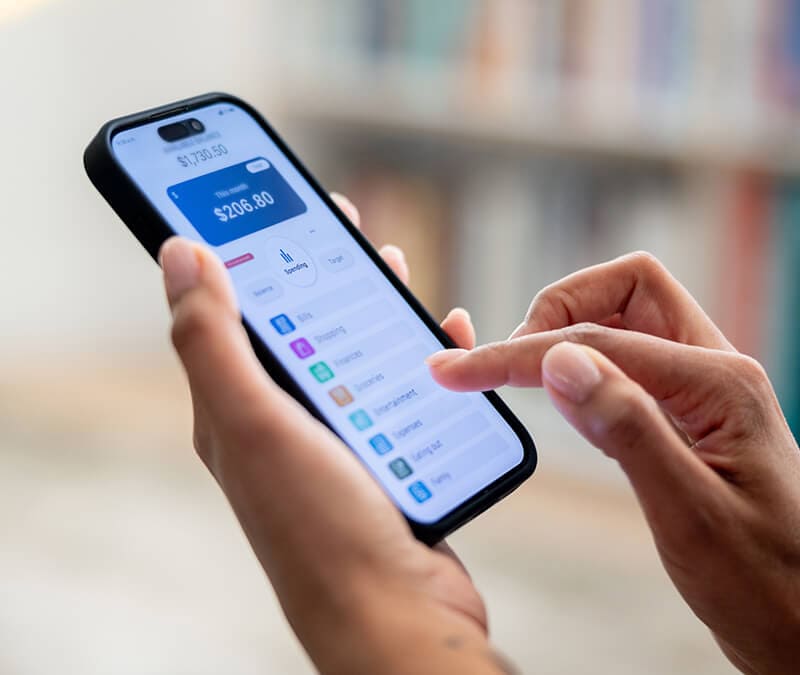4 Easy tips you need this Cybersecurity Awareness Month
Here are the four key steps with quick-and-easy action items, plus a bonus task to help you protect yourself from identity theft this year.

It’s always a good time to take stock of your cybersecurity practices—and what better time than now, on Cybersecurity Awareness Month. This is an annual event that's been taking place in October since 2003 to highlight the importance of online security.
With a theme of Secure Our World, we’re showcasing four quick, easy actions you can do to help protect yourself from cyber threats. And, who knows? There may be a bonus tip at the end.
1. Spot and report phishing scams.
Phishing scams happen when cybercriminals trick you into revealing personal information by clicking malicious links, often through fake emails or text messages that appear to be from trusted sources. These scams are getting more sophisticated, with criminals even using AI to make their messages more convincing.
How to do it:
- Be cautious of emails or messages that seem urgent or ask for sensitive information—this may be a sign of social engineering.
- Look for red flags like spelling errors, suspicious email addresses, or requests to click a link. Not all phishing attempts have bad spelling, but it’s often a tell-tale sign.
- Never enter personal information unless you’re sure the source is legitimate. Don’t click on the link and go directly to the source.
- If you suspect a phishing attempt, you can use Norton Genie to help determine if it’s a bad one. If it’s phishing, report it to your email provider and delete the message without clicking any links.
2. Use strong passwords.
Using strong, unique passwords is one of the most basic yet effective ways to protect your online accounts. Strong passwords should be at least 16 characters long, include a mix of letters, numbers, and symbols, and avoid any personal information.
If remembering all these passwords feels overwhelming, a password manager can help by storing and generating complex passwords for you. Alternatively, many services now offer password-less options like biometrics or passkeys.
How to do it:
- Use a strong password manager, such as Norton Password Manager, to generate and store your unique passwords securely.
- Choose a strong master password for your password manager, and make sure it’s something only you know.
3. Turn on two-factor authentication (2FA).
Two-factor authentication (2FA) is a security feature that requires more than just a password to log into your accounts. After you enter your password, you’ll need to verify your identity through a second step, like a code sent to your phone or an app. This makes it much harder for cybercriminals to gain access to your accounts, even if they have your password.
How to do it:
- Enable 2FA on your most important accounts, such as email, banking, and social media. You can usually find the option in your account settings under “Security” or “Login.”
- Follow the prompts to set up 2FA using your preferred method—whether it's a code sent to your phone, an authentication app, or a biometric login like fingerprint or face recognition.
4. Keep your software up to date.
Outdated software can leave your devices vulnerable to cyberattacks, as bad actors often exploit security flaws in old versions. Regular software updates help patch these weaknesses, protect against malware, and keep your devices running smoothly. Keep your devices, apps, and antivirus always up to date to have the best protection.
How to do it:
- Turn on automatic updates for your devices to ensure they stay secure.
- If you prefer to update manually, set a monthly reminder to check for updates on your computer, smartphone, and apps.
- For Apple software updates, go to Settings > General > Software Update and on Android, go to Settings > System > Software Update. Don’t forget to update your apps regularly through the app store.
Bonus tip: Prioritize your identity and privacy.
It's common to fall prey to identity theft, and it's hard to clean up the mess after it happens. However, there are simple things we can do to help protect our data.
In fact, the tips we just discussed already help you avoid identity theft. And there are a few more things you can do to help keep you even safer.
How to do it:
- Use a robust VPN with malware protection, such as Norton VPN, when accessing sensitive information online, especially on public Wi-Fi.
- Regularly monitor your credit reports to catch any signs of identity theft early. You can get free reports from each of the three major credit bureaus once a year at AnnualCreditReport.com.
- When disposing of documents with sensitive information, shred them.
Awareness is key.
With just a few simple steps, you can greatly reduce your risk of cyberattacks and bolster your family’s Cyber Safety. You can do most of these steps in an hour or less—and many only need to be done once. Making the time to do these tasks this month can pay you back many times over in greatly enhanced security and peace of mind.
Editorial note: Our articles provide educational information for you. Our offerings may not cover or protect against every type of crime, fraud, or threat we write about. Our goal is to increase awareness about Cyber Safety. Please review complete Terms during enrollment or setup. Remember that no one can prevent all identity theft or cybercrime, and that LifeLock does not monitor all transactions at all businesses. The Norton and LifeLock brands are part of Gen Digital Inc.




Want more?
Follow us for all the latest news, tips, and updates.